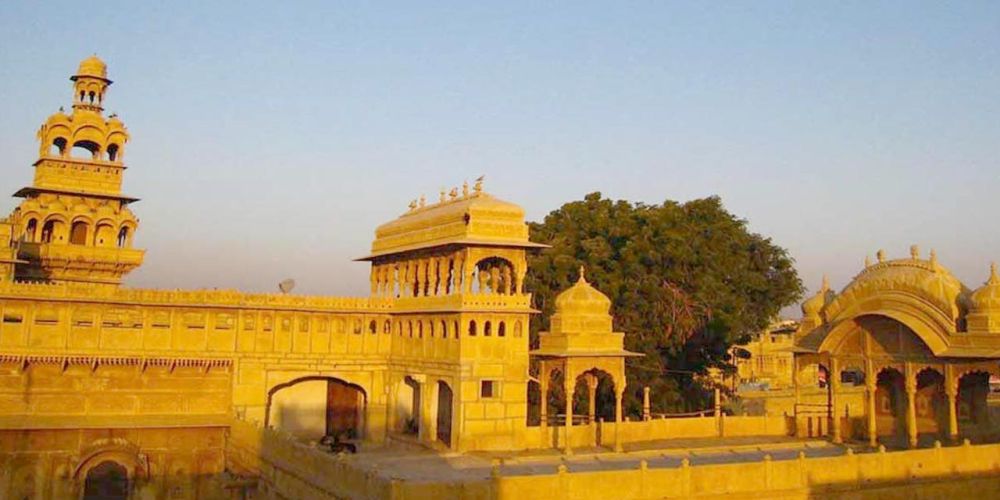

The Tazia Tower, an architectural marvel located in the heart of Jaisalmer city in Rajasthan, India, has long been a point of attraction for tourists from around the world. This tower is part of the Badal Palace complex situated near the Amar Sagar Gate. Tazia Tower stands as a testament to the rich art and architecture of the era during which it was constructed.
The history of Tazia Tower can be traced back to the end of the 19th century. It reflects the religious and cultural symbiosis of the time, showcasing influences from both Muslim and Hindu traditions. The tower was erected by Muslim craftsmen and gifted to their patron Maharawal Berisal Singh, indicating the secular mindset of the rulers and the harmony that prevailed in the region.
Tazias are ornamental replicas of the mausoleums of the Shiite imams which are carried in processions during the Islamic month of Muharram. The Tazia Tower of Jaisalmer is a five-storied structure where each floor boasts of a balcony-like feature with intricate designs commemorating the Tazias. The fine craftsmanship is characterized by its ornate balconies, delicate carvings, and the fusion of Rajput and Islamic architectural styles.
Tourism around the Tazia Tower saw a gradual increase as the popularity of Jaisalmer as a tourist destination grew. Once a cultural and religious landmark, it transitioned into a sought-after tourist spot in the late 20th century when travel in Rajasthan became a staple in the itineraries of both domestic and international travellers.
The Jaisalmer Fort, close to the Tazia Tower, is a UNESCO World Heritage Site and one of the largest fully preserved fortified cities in the world, further contributing to the volume of tourists visiting the tower. Through the years, the Tazia Tower has remained a symbol of the multicultural tapestry that defines Jaisalmer, immortalizing the craft of bygone eras.
In recent years, sustainable tourism has taken center stage in Jaisalmer and around Tazia Tower. Efforts are being made to preserve the delicate structures and the environment. Tour operators and local authorities are encouraging responsible tourism practices, including reduced vehicular traffic within the old city and the increased use of eco-friendly materials and local craftsmanship in maintaining and restoring the historic structures.
Moreover, with the advent of digital and social media, Tazia Tower has become increasingly visible to the wider world. Virtual tours, advanced booking systems for sightseeing, and the focus on immersive experiences that respect local culture and traditions are creating new and more sustainable modes of tourism for Jaisalmer's Tazia Tower.
Visitors today can enjoy not only the architectural beauty of the Tazia Tower but also the surrounding area which is rich in history and culture. Local guides offer tours explaining the nuances of the tower's design, the history of the region, and the stories that give a voice to its walls. The combination of ancient heritage and modern tourism practices ensures that the Tazia Tower continues to be a cherished destination for years to come.